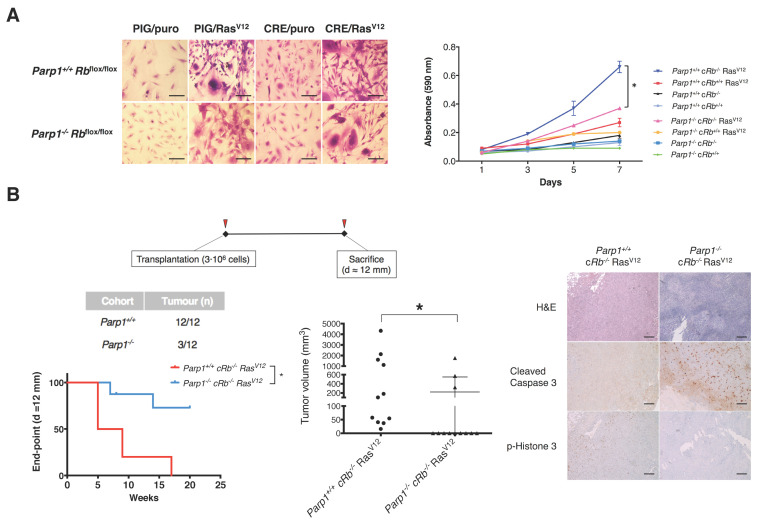Figure 3.
The absence of Parp1 leads to reduced oncogenic potential in transformed astrocytes and inhibition of tumour development in vivo. (A) Morphological changes and proliferation rates were evaluated in Parp1+/+ cRb−/− RasV12 and Parp1−/− cRb−/− RasV12 glial cells. Cells were stained with crystal violet and proliferation curves were calculated. Parp1+/+ cRb−/− RasV12 glial cells showed a transformed phenotype when compared with control cells, characterized by the presence of prominent morphological changes and an increased proliferation. Scale (40×) = 25 μm. This transformed phenotype is reduced in cells null for Parp1 (* p < 0.05). (B) The oncogenic potential in vivo of Parp1+/+ cRb−/− RasV12 and Parp1−/− cRb−/− RasV12 astrocytes was assessed by injecting 3 × 106 cells in the hindquarters of SCID mice. All mice from the Parp1+/+ cRb−/− RasV12 cohort developed tumoral masses, but only 3 out of 12 mice injected with Parp1−/− cRb−/− RasV12 cells. Mice were euthanized when the tumour reached a diameter of 12 mm. The graph shows the mean tumour volume in both experimental groups (* p < 0.05). Kaplan-Meier graph shows the different tumour end-points (d = 12 mm) for mice of both cohorts (* p < 0.05). Histological analysis of tumoral samples obtained from control and Parp1-deficient cohorts. Scale (20×) = 50 μm.

